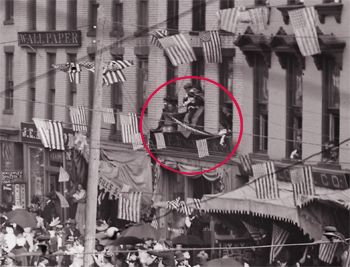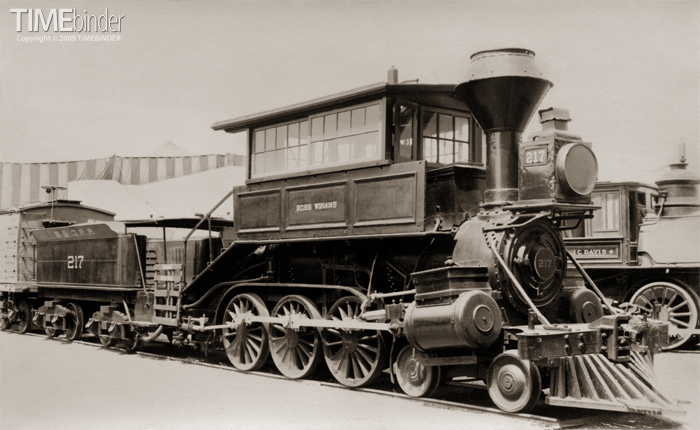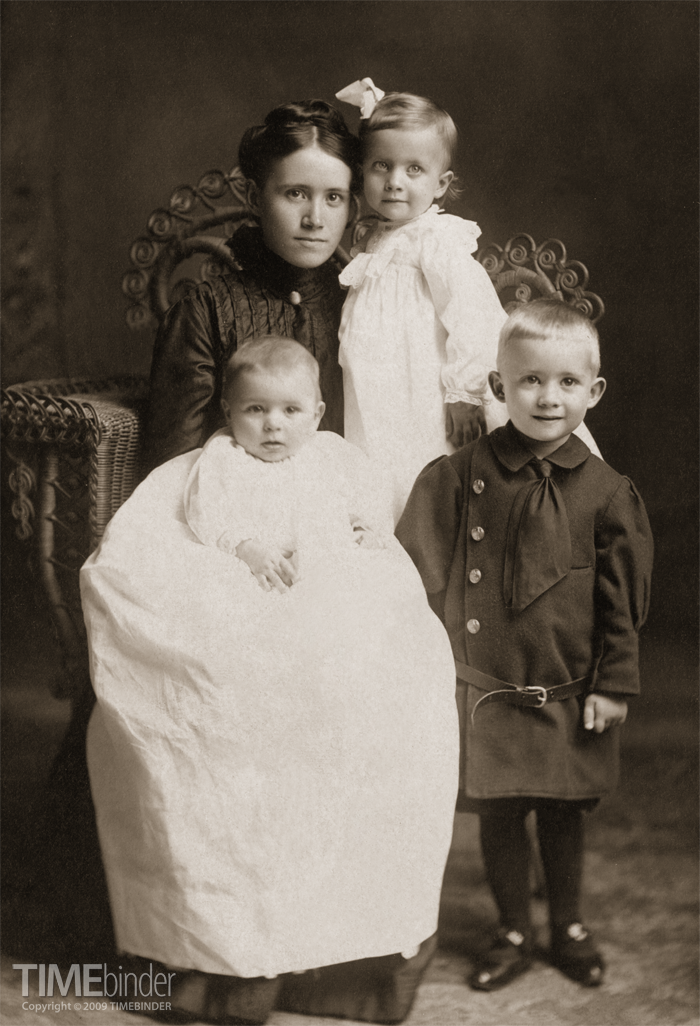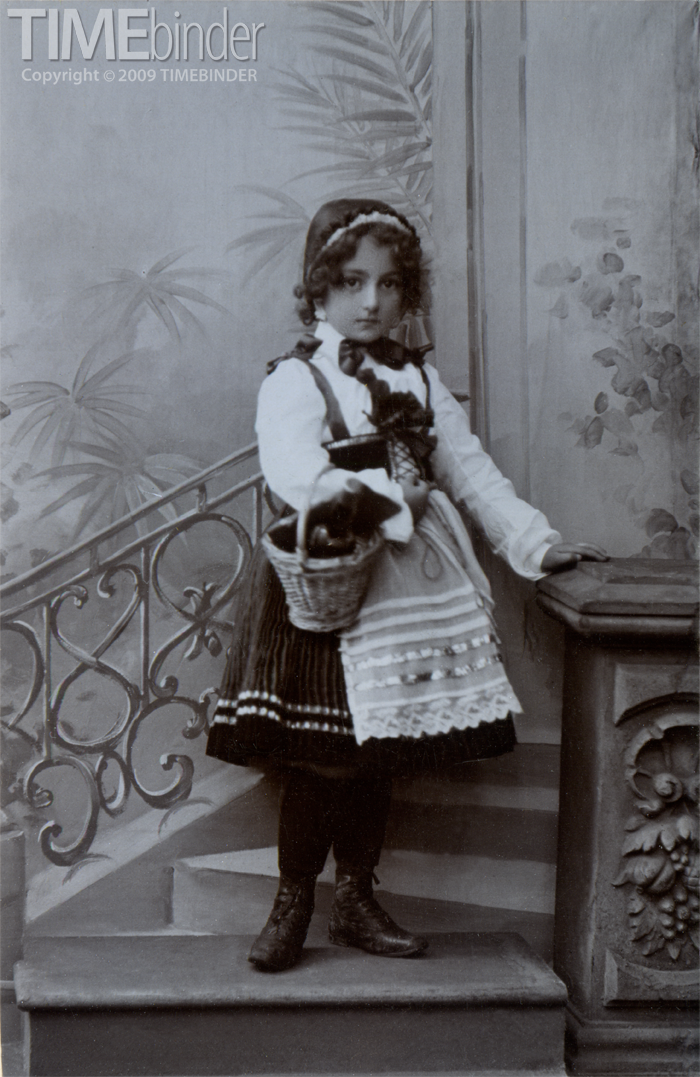July 4th Parade – Chicago
 Sunday, January 10, 2010 at 6:55PM
Sunday, January 10, 2010 at 6:55PM 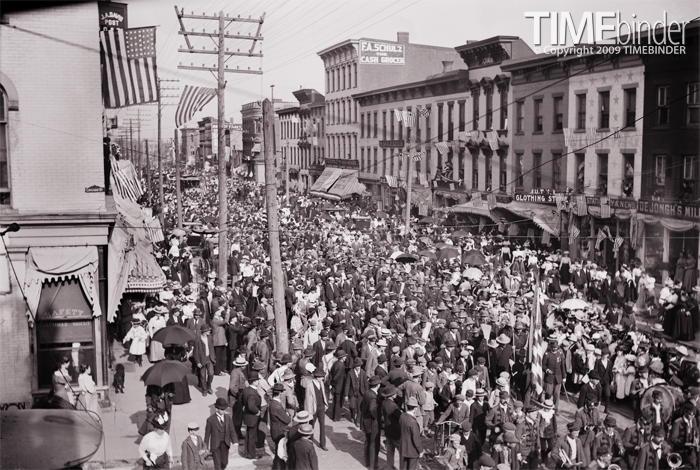
We can be reasonably certain that this 5" x 7" glass negative was taken on July 4th, and by the 38 star flags (used from 1877 - 1890) the year may be in the mid-1880s (bolstered by the prevalence of the men's bowlers with the turned down front brims, the droopy mustaches and other sartorial details). There are three hatless women on the sidewalk in the lower left, virtually the only people in the entire scene without hats – with the exception of three women hanging precariously out of a second story window, one holding a gesturing, not-so-little boy on her knee (good heavens, lady, it's at least 18 feet to the sidewalk!).
Flags are everywhere (even a non-official one with more than 30 stars arranged in a circular pattern that I can find no information about) and there are more people marching in the parade than are watching them go by! They are a motley crew with the exception of a band in the near foreground, followed by a group wearing broad-brimmed hats with the lead figures carrying brooms (?); in the far background is a streetcar that is skirted with star bunting, so perhaps they are dignitaries or local politicians who could not be expected to walk like everyone else (it is interesting that there are no other parade-related conveyances or anyone riding horses in this view).
If I had a business directory of the period, I could confirm my guess that this is Chicago, though I suppose another city might have a Chicago Street as well. On the left corner is a bank advertising a Safety Deposit Vault; on the right side of the street are named businesses: a millinery store, clothing store, stationery and news store, two cash grocery stores, a cafe that serves meals at all hours, a pharmacy, Acorn stoves and ranges, a candy factory that is practically next door to a dentist, a wallpaper store, real estate office, and a photographer's studio among others.
It is generally said that everyone loves a parade, but it may also be true that every antique photograph collector loves photos of parades. A glass negative of this size provides remarkable detail; I only regret that it isn't possible for online viewers to inspect them minutely on the scale at which I restore such prints.
